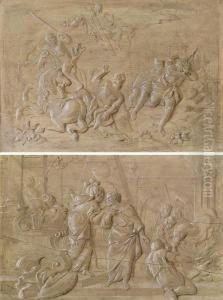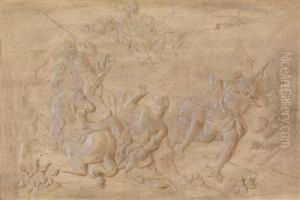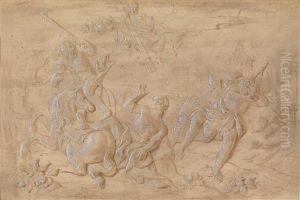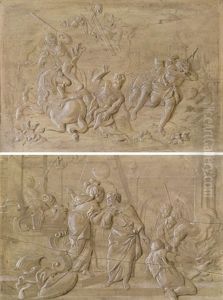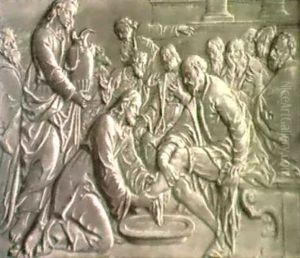Josef Leopold Strickner Paintings
Josef Leopold Strickner was an Austrian artist known for his work as a miniaturist and engraver. Born in 1786 in Tirol, then part of the Habsburg Empire, Strickner developed his artistic skills in a period marked by the transition from the late Baroque era to the burgeoning Romantic movement. His detailed miniature portraits were highly sought after, particularly within aristocratic circles, as they captured the refined elegance of his subjects with remarkable precision.
Strickner's artistic career flourished in a time when portraiture was a significant aspect of cultural life, serving both as a status symbol and a means of recording likenesses before the advent of photography. His miniatures were often created using watercolor on ivory, a popular technique among miniaturists of the time, which allowed for fine, delicate brushwork and a luminous quality that was highly prized.
Despite the popularity of his work, there is limited biographical information available about Strickner's personal life or his artistic training, which was not uncommon for many artists of the period. It is known, however, that he was active in Vienna, which was a hub for cultural and artistic activities in the Austrian Empire. Strickner's engravings also contributed to his reputation, as engraving was a key method for reproducing artworks and disseminating them to a broader audience during this era.
Unfortunately, as is often the case with artists of the past, Strickner's work has not been as widely recognized or studied as that of some of his contemporaries. Nevertheless, his contributions to the field of miniature painting are part of the rich tapestry of European art history. Josef Leopold Strickner passed away in 1850, leaving behind a body of work that reflects the skill and elegance of early 19th-century miniature portraiture.
